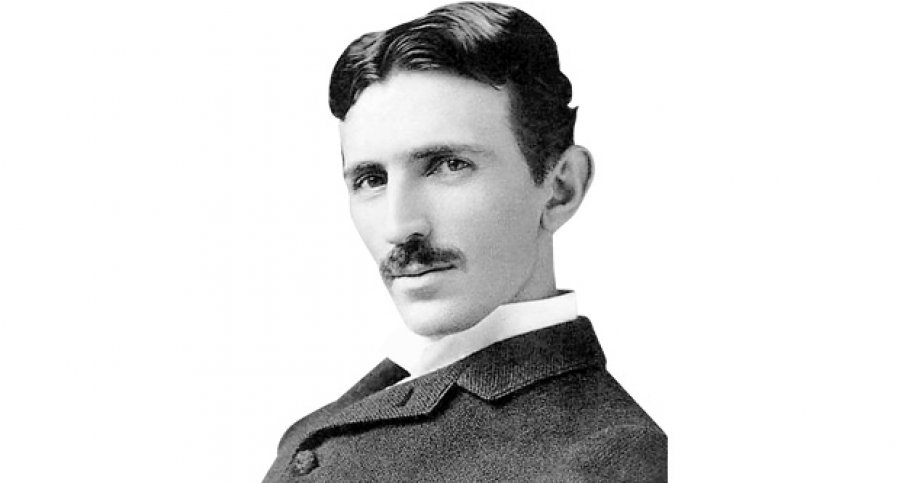

Every time you fire up your computer or smartphone, turn on your TV or radio or start just about anything that runs on electricity, you can thank Nikola Tesla. Today is the 161st birthday of the genius behind the alternating current, the Tesla coil and the AC induction motor, which is the basis of that eponymous electric car (that doubtless would have pleased him).
Tesla invented or discovered many lifetimes worth of things. Here’s just the short list of inventions or discoveries that were credited to him:
· Alternating power current
· AC induction motor
· Tesla coil
· Tesla turbine
· Radio/wireless communication
· Remote control, which was used for radio-controlled weapons in WWII
· Laser beam (the theory of a particle beam or electromagnetic weapon)
It’s hard to imagine life without most of those inventions. Equally astounding is that Tesla could conceive of the principles and applications of them when he lived in a time that measured horsepower by actual horses. And a person needed only one to get around, not the 762 under the hood of the Tesla Model S.
A child of light
Tesla’s life began auspiciously at the stroke of midnight on July 10, 1856, as lightning storms ignited the sky, over Smilja, Lika, now Croatia. The frightened midwife who delivered the baby boy said he would be a child of storms, while his mother, Djuka Mandic, said, no, “of light.” His father, Milutin Tesla, was a Serbian Orthodox priest, who encouraged young Nikola to follow in his footsteps. But the child was inspired by his mother, who – in addition to raising five children – found the time to invent labor-saving household appliances (no record could be found indicating what they were) and was an expert seamstress. Tesla carried a travel bag that she embroidered all his life.
Eschewing the priestly life, Tesla studied at the Polytechnic Institute in Graz, Austria, and the University of Prague. Initially, he sought to study physics and mathematics, but became fascinated by electricity, whose properties were being harnessed by many inventors, including Thomas Edison, who produced a reliable, long-lasting lightbulb in 1879.
After university, he got a job as an electrical engineer for a Budapest telephone company in 1881. It was while walking through a Budapest city park with a friend that he flashed on the solution to the rotating magnetic field. With a stick, he drew a crude drawing in the sand of the principle of the induction motor. Two years later he built a working prototype, but was unable to generate interest in it in Europe. So, he accepted an offer to work for Edison in New York. Edison’s close associate Charles Batchelor became aware of Tesla while in Paris and prompted the young man to Edison, calling him one of two great men, the other being Edison.
AC vs. DC
Tesla had a bright career for a time with Edison, improving the inventor’s line of dynamos to send electricity throughout the Atlantic seaboard. But he clashed with Edison over the use of direct current (Edison’s assertion) versus alternating current. Direct current petered out quickly which meant power plants were needed every two miles. Alternating current could go longer distances at much higher voltage levels. Tesla’s AC easily won out, though the rivalry did not.
Tesla went on to use his polyphase alternating current system to create generators, motors and transformers, earning patents that were bought by George Westinghouse, who recognized the usefulness of Tesla’s AC motor with alternating current dynamo and step-up and step-down transformers for supplying power over long distances. Tesla used the alternating current in the design of the first hydroelectric powerplant at Niagara Falls in 1895, the fulfillment of his childhood dream to harness the great falls.
Some would say the motor Tesla developed using AC power is his crowning achievement. The Tesla Society calls it “one of the 10 greatest discoveries of all time.” Indeed, the Tesla car company would likely agree, noting on their website that the Tesla Roadster’s powertrain was built around Tesla’s AC induction motor, which he patented in 1888.
But a strong second had to be the Tesla coil, an electrical resonant transformer circuit he designed in 1891. Tesla used the coil to transmit electricity wirelessly for experiments in a wide array of electrical systems such as lighting, X-rays and electrotherapy, among others. The coil also sparked a revolution in communications – the radio. Suddenly, speeches, concerts, news could be streamed to audiences anywhere in the world. Tesla coils, the apparatuses that send lightning sparks à la “mad scientist” labs, are still used today as leak detectors for high vacuum systems.
A man out of time
With his coil, the notion of sending electricity through the air became an obsession with Tesla, who sought to build a global, wireless communication system in 1900. He got funding from investors, including JP Morgan and began work on a massive transmission tower called Wardenclyffe on Long Island, NY. But pressure from doubting investors and his rivals, Edison and Guglielmo Marconi (who would get credit for the radio) led Tesla to abandon his project. He shortly thereafter declared bankruptcy and his life spiraled downhill, becoming a mix of evermore outlandish ideas like building a “death beam” (laser?). He died poor and alone on Jan. 7, 1943, at age 86. He lives on, though, in just about everything you use – or for some, drive.


